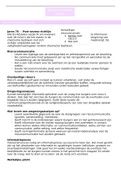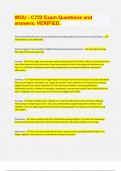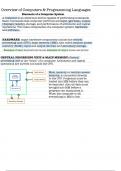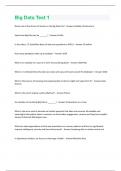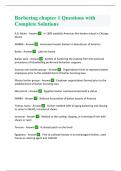A Level Biology Chapter 1 - Biological Molecules
3.1.1
Monomers→Smaller units from which larger molecules are made
Polymers→Molecules made from large number of monomers joined together
Condensation reaction↓
o Joins 2 molecules together
Formation of chemical bond
Elimination of molecule of water
Hydrolysis reaction↓
o Breaks chemical bond between 2 molecules
o Involves use of water molecule
Metabolism→The name for chemical processes that take place in living
organisms
3.1.2
Monosaccharides↓
o Monomers from which larger carbohydrates are made
o Includes glucose, galactose and fructose
Glycosidic bond↓
o Formed in condensation reaction between 2 monosaccharides
Disaccharides↓
o Formed by condensation of 2 monosaccharides:
Glucose + Glucose ⇒ Maltose
Glucose + Fructose ⇒ Sucrose
Glucose + Galactose ⇒ Lactose
Isomers of glucose―
o Alpha-glucose
o Beta-glucose
Difference between alpha-glucose and beta-glucose's structures↓
o Position of -OH group attached to carbon 1:
In alpha-glucose it is below carbon
In beta-glucose it is above carbon
, Polysaccharides↓
o Formed by condensation of many glucose molecules
Glycogen and starch formed by condensation of α-glucose
Cellulose formed by condensation of β-glucose
Test for reducing sugar↓
o Add benedict's solution to solution of sample
o Heat in water bath
o Solution will turn from aqua blue to orange-brown if reducing sugar
present
Test for non-reducing sugar↓
o Test for reducing sugar
Negative result - Stays aqua-blue
o Add HCl to sample
Place in boiling water bath for 5 minutes
Dilute HCl hydrolyses disaccharides
⇒ Constituent monosaccharides produced
o Benedict's solution only works in alkaline conditions
⇒ Add sodium hydrogen carbonate (NaHCO3)
Neutralises HCl
Test pH with red litmus paper ⇒ Turns blue
o Retest for reducing sugar
Solution turns orange-brown
Polysaccharide examples―
o Starch - Found in plants
o Cellulose - Found in plants
o Glycogen - Found in animals, bacteria
Starch structure and why it's suitable for energy storage↓
o Polysaccharide
o In plant cells
o Structure:
Formed from condensation of α-glucose molecules
α-1,4 glycosidic links/bonds
3.1.1
Monomers→Smaller units from which larger molecules are made
Polymers→Molecules made from large number of monomers joined together
Condensation reaction↓
o Joins 2 molecules together
Formation of chemical bond
Elimination of molecule of water
Hydrolysis reaction↓
o Breaks chemical bond between 2 molecules
o Involves use of water molecule
Metabolism→The name for chemical processes that take place in living
organisms
3.1.2
Monosaccharides↓
o Monomers from which larger carbohydrates are made
o Includes glucose, galactose and fructose
Glycosidic bond↓
o Formed in condensation reaction between 2 monosaccharides
Disaccharides↓
o Formed by condensation of 2 monosaccharides:
Glucose + Glucose ⇒ Maltose
Glucose + Fructose ⇒ Sucrose
Glucose + Galactose ⇒ Lactose
Isomers of glucose―
o Alpha-glucose
o Beta-glucose
Difference between alpha-glucose and beta-glucose's structures↓
o Position of -OH group attached to carbon 1:
In alpha-glucose it is below carbon
In beta-glucose it is above carbon
, Polysaccharides↓
o Formed by condensation of many glucose molecules
Glycogen and starch formed by condensation of α-glucose
Cellulose formed by condensation of β-glucose
Test for reducing sugar↓
o Add benedict's solution to solution of sample
o Heat in water bath
o Solution will turn from aqua blue to orange-brown if reducing sugar
present
Test for non-reducing sugar↓
o Test for reducing sugar
Negative result - Stays aqua-blue
o Add HCl to sample
Place in boiling water bath for 5 minutes
Dilute HCl hydrolyses disaccharides
⇒ Constituent monosaccharides produced
o Benedict's solution only works in alkaline conditions
⇒ Add sodium hydrogen carbonate (NaHCO3)
Neutralises HCl
Test pH with red litmus paper ⇒ Turns blue
o Retest for reducing sugar
Solution turns orange-brown
Polysaccharide examples―
o Starch - Found in plants
o Cellulose - Found in plants
o Glycogen - Found in animals, bacteria
Starch structure and why it's suitable for energy storage↓
o Polysaccharide
o In plant cells
o Structure:
Formed from condensation of α-glucose molecules
α-1,4 glycosidic links/bonds

